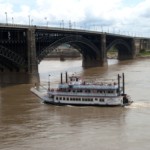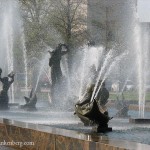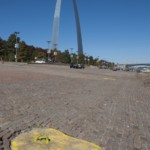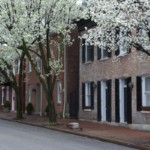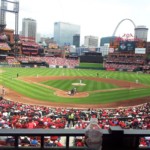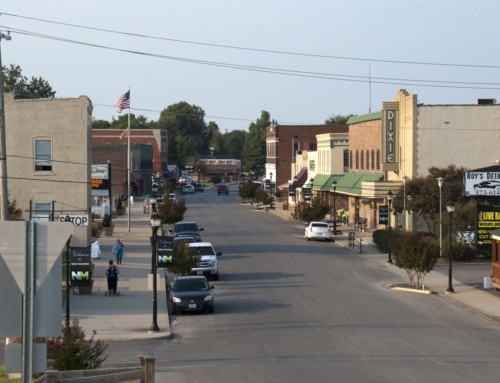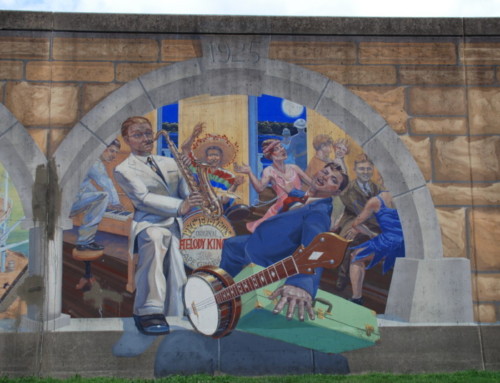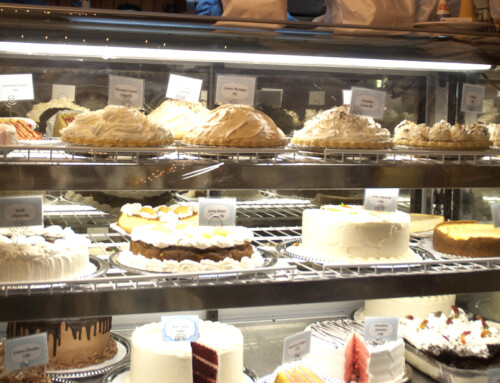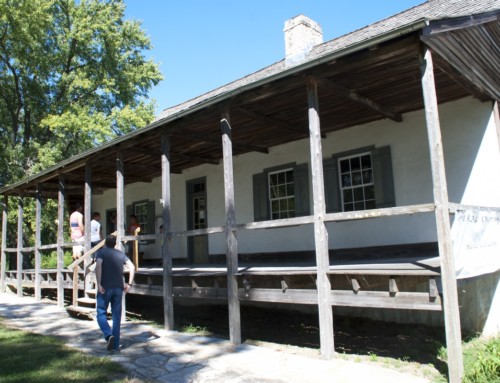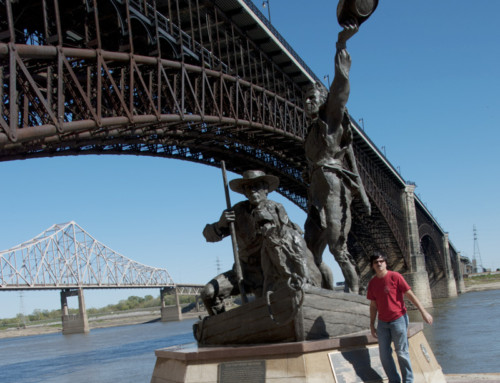Introduction
St. Louis, my hometown, is a city with a long and layered history. As residents of Flyover Country, we tend to make the national news only when something goes wrong. Sure, we have our problems, but so do plenty of other places. We are a big city with big-city benefits and problems. We have cultural institutions that are the envy of many places, but we also have more crime that I wish we did. For a big city, traffic is a breeze, but you almost have to have a car to get around the area reliably. Summer can be pretty darn hot and muggy, but spring and fall are often amazing. And even though folks complain about the cold, winter is usually mild by any objective measure.
Maybe best of all, St. Louis is surprisingly affordable for a big city. We have a good quality of life for a lot less money than people in other parts of the country. That also means that St. Louis is an inexpensive place for visitors, too. Plus, we have the Mississippi River as our front door. Don’t just come here, look at the Arch, and drive on. Stick around a few days and (or come back for another visit) and get to know the city that looks East, opened the West, yet feels a whole lot Southern.
TIP: Read the Introduction to St. Louis for more about the region, including food specialties, festivals, getting around, and the various municipalities.
Visitor Information
Get your questions answered by contacting the good folks at Explore St. Louis (800.916.8938).
History
Long before there was a city called St. Louis, the region where the Mississippi and Missouri Rivers meet was an attractive place to live. One of the great cities in North America grew up just across the Mississippi about a thousand years ago; upwards of 20,000 people lived in and around a place we call Cahokia today. Even before Cahokia emerged, the site of today’s St. Louis once was home to thousands of years of settlements; some of those communities built earthen mounds near the river, which is why the city was once nicknamed Mound City (most have long since been destroyed).
City’s Founding
In August 1763, Pierre Laclède left French New Orleans with 24 men to establish a treading post. By the time Laclède laid out the village, France had ceded the territory to Spain, so St. Louis ended up being a French cultural outpost under Spanish rule.
Laclède chose to build his post on a terraced piece of real estate on the west bank of the Mississippi River twelve miles south of the Missouri River. There had been interest in building a post at the confluence of the two rivers, but the area was too marshy. The early city got a quick boost when England took control of France’s Illinois Country in 1763; many French families moved to St. Louis from places like Cahokia and Kaskaskia. In 1772, St. Louis counted just over 600 residents, about a third of whom were enslaved (mostly enslaved Africans but a few enslaved American Indians, too). The city was also home to a few free blacks, and American Indians from various tribes came and went regularly during the early years.
Laclède laid out the early boundaries of the city but didn’t live long enough to see it prosper. He traveled to New Orleans in 1777 to straighten out his financial affairs but became ill and died during the return voyage. Leadership of the city passed to Auguste Chouteau, the son of Laclède’s lover, Madame Marie Thérèse Chouteau. Chouteau would go on to make a lot of money from the fur trade and other ventures and would be the city’s most influential early leader.
The city’s thousand residents, most of them French, became part of the United States in 1804 with the Louisiana Purchase. The newly American St. Louis was an exciting place to be. Situated on the edge of the frontier—the last outpost of civilization—the city’s residents gave the send-off to Meriwether Lewis and William Clark’s expedition west in 1804 and Zebulon Pike’s 1805 expedition north.
Several Irish immigrants were among the early settlers in American St. Louis. John Mullanphy left Ireland at a time when Catholics had few opportunities in the Emerald Isle—they couldn’t own land or send their children to school and were prohibited from many occupations. When he reached St. Louis, he took a long drink of water from the Mississippi River, which tasted like freedom and opportunity. He made a fortune selling cotton at the end of the War of 1812 and used his wealth to influence the development of St. Louis, funding start-ups, donating land and money for a hospital, an orphanage, and a seminary. His son, Bryan, served a term as mayor of St. Louis. John Mullanphy also raised and educated seven daughters who built their own legacies, even if it was their husband’s surnames that were memorialized around town (Chambers, Biddle, Clemens, etc.).
River Spurs Growth
In 1817, the first steamboat reached St. Louis, the Zebulon Pike. Steamboats reduced the travel time between St. Louis and New Orleans from months to days. This watershed event heralded dramatic growth for St. Louis, setting the stage for the city to become one of the most important ports in US. Those boats connected St. Louis to markets in New Orleans and around the world. By the 1850s, hundreds of steamboats made three thousand annual landings; the mile-long levee was often packed with steamboats coming and going, cargo stacked high, and workers busily loading and unloading the boats.
Missouri was granted statehood in 1820 with legal slavery. As a result, Missouri’s population was bolstered by the migration of many slave owners from bordering southern states. They were joined by thousands of immigrants, like the 7,000 Germans who arrived in the 1830s and Irish emigrants who had arrived earlier. The city also counted among its residents thousands of enslaved blacks and a small community of free blacks. By 1836, there were enough Jews in St. Louis to hold the first known prayer meeting.
St. Louisans developed a reputation as a hostile place to live if you were black, whether you were free or enslaved. William Wells Brown, a man who had escaped slavery, wrote in his autobiography:
Though slavery is thought, by some, to be mild in Missouri, when compared with the cotton, sugar and rice growing states, yet no part of our slave-holding country, is more noted for the barbarity of its inhabitants, than St. Louis.
Brown may have been thinking about one incident in particular. On July 9, 1841, four black men were hanged on Duncan Island. They were accused of killing two men during a robbery. One of the hanged men was Charles Brown, a well-known abolitionist who may have been targeted for his political views. The hanging had been widely advertised, so it drew a crowd of 20,000 spectators, including a steamboat load of folks who traveled down from Alton to watch it. After the execution, the heads of the four men were displayed in the window of Corse’s Drug Store.
Still, free blacks did what they could to build a life. John Berry Meachum, who had bought his way out of freedom by mining and selling saltpeter, moved to St. Louis around 1815 and set up a business as a carpenter and cooper. He earned enough money to buy freedom for his wife and children and nearly two dozen other enslaved people. He was ordained as a Baptist minister and was one of the original founders of the First African Baptist Church. In the basement of that church, he established one of the few schools for free and enslaved blacks in St. Louis.
When Missouri outlawed education for blacks in 1847, the Sisters of St. Joseph of Carondelet were forced to close the school where they taught black girls. Meachum, however, is reputed to have moved his school to the steamboat he built, so he could continue teaching kids on the river and out of the jurisdictional reach of Missouri law.
Two major disasters in 1849 reshaped the city: a cholera epidemic that killed 7,000 people (10% of the city’s population!) and a major fire that wiped out much of the core of the city. As a result, the city greatly improved its sanitation systems and required masonry construction for new buildings. Still, these were boom times for St. Louis thanks to the river. Every day, hundreds of steamboats loaded and unloaded their cargo on the city’s levee.
In 1861, with civil war under way, Union Captain National Lyon moved to secure the weapons at the St. Louis Arsenal and to impound weapons from pro-Confederate state militias. The aggressive move secured St. Louis for the Union and spooked St. Louis residents with pro-Southern views. Upwards of 17,000 people fled the city; many ended up joining the Confederate Army. St. Louisan James B. Eads, a self-taught engineer, built five iron clad boats for the Union’s combat efforts on the Mississippi and adjoining rivers that were instrumental in Union victories.
Boom Years
From 1860 to 1900, the population of St. Louis exploded from 160,000 residents to 575,000. At the same time, railroads expanded, diminishing the importance of the Mississippi River to the city’s economy. Among the folks who made St. Louis home during that time were Chinese immigrants, who arrived beginning in 1869 and built a community where Busch Stadium is today.
By 1870, manufacturing was expanding rapidly. St. Louis had nearly 90 brickyards producing the vibrant red bricks that still define the city today. Flour mills and iron foundries employed thousands of people.
Beer was one of the major industries, too, thanks to plenty of clean water and a natural cave system to keep the finished product cool. Forty breweries were active after the Civil War. Most of them were small operations that served just their immediate neighborhoods, but beer grew big business as two companies moved toward mass production. Adam Lemp was one of the first to brew lager beer in the US. By the 1870s, the Lemp Brewery was the largest in St. Louis and later became the first beer company to develop a national distribution network, introducing their flagship brand, Falstaff, to Americans from coast to coast.
In the 1870s, Adolphus Busch rolled out the first cans of Budweiser and began an aggressive marketing campaign to challenge the Lemp dominance. Adolphus married into a beer family, when he wedded Lily Anheuser in 1861. Anheuser-Busch pioneered the refrigerated railroad car as a way to distribute their beer around the US; they were also the first brewer to pasteurize beer to improve its shelf life. The company also built taverns around town like the Stork Inn, Feasting Fox, and Bevo Mill, to help dominate the St. Louis market.
The Lemp Brewery was in decline by the early 1900s and killed off by Prohibition. Anheuser-Busch survived by selling products like brewer’s yeast and an alcohol-free beer called Bevo. After Prohibition, Anheuser-Busch grew phenomenally; the company became the largest US brewer in the 1950s. In 2008, they were bought out by an international company, InBev, but kept its North American headquarters in St. Louis. The conglomerate is now the largest brewery in the world.
Goodness, there are a lot of stories about these two companies and the people who ran them, far more than I can cover in this book. If you’d like to read more, check out St. Louis Brews: The History of Brewing in the Gateway City by Henry Herbst, Don Roussin, Kevin Kious, and Cameron Collins.
At the end of the 19th century, St. Louis grew into one of the world’s largest manufacturers of shoes. In 1905 alone, the city’s factories churned out 48 million pairs of shoes, which was one-sixth of all the shoes produced in the country. The St. Louis shoe business grew because cheap labor was easy to find thanks to the large immigrant population (women and children, mostly) and railroads made it easy to ship the shoes around all over the US.
The industry was concentrated along Washington Avenue in a row of solid brick and stone buildings. Twenty companies had plants in St. Louis at one time, including big names like Brown Shoes and the International Shoe Company. Those companies eventually moved much of the production to rural areas where the factories became more specialized and the work force was less likely to be unionized. Following a few lucrative years of government contracts during the war years, production dropped and factories began to close. Most of the production moved out of the US where it was was cheaper to operate. Those buildings today have been converted into trendy lofts and restaurants.
Life is Good
St. Louis may have reached its cultural zenith in 1904. Basking in its status as the fourth largest city in the US, St. Louis hosted three prominent events: a World’s Fair to celebrate the Centennial of the Louisiana Purchase, the summer Olympic Games, and the Democratic Party convention.
St. Louisans today are still nostalgic about that World’s Fair, and rightly so. Some twenty million people visited the fair in just seven months, quite a crowd for a city of 600,000 residents. Visitors were treated to exhibits highlighting the best in early 20th-century science, culture, and the arts. A guy named Thomas Edison helped with the electrical exhibits.
The first Olympic games on American soil drew 651 athletes from twelve countries. Those games featured what was perhaps the most memorable marathon in Olympic history. Frederick Lorz crossed the finish line first, but somehow none of the officials noticed that he had dropped out after running just nine miles. (He hitched a ride in a car the rest of the way.) When the truth surfaced shortly after he was awarded the first-place medal, he was banned from competition for one year. In his defense, he must have been a pretty good runner, as he went on to win the Boston Marathon in 1905.
The real winner of the marathon was Thomas Hicks, a British native who was competing under the US flag. He won because of, or maybe in spite of, trainers who gave him a neurotoxin called strychnine sulfate. It was supposed to act as a stimulant to keep him going, but they also fed him a little brandy, probably to numb the pain he felt from the strychnine. He was too weak to cross the finish line on his own, so his trainers had to carry him across. At least they helped him once. Still, in spite of the strychnine, brandy, and 26 miles, he survived.
In 1916, St. Louis voters approved a referendum that codified housing segregation. It banned anyone from buying a house in a neighborhood where 75% of the residents were of a different race. The US Supreme Court tossed out the law the next year, but determined St. Louisans turned instead to using racial covenants, contracts in which individual homeowners agreed they would not sell their property to someone of a different race. (This was always white property owners agreeing they wouldn’t sell to African Americans.) In 1948, the US Supreme Court ruled these agreements were unconstitutional in a case that originated in St. Louis (Shelley v. Kraemer). Homeowners found ways around the ban for decades; as neighborhoods finally became more integrated, white families moved out of the city en masse. From 1950 to 1970, the white population fell from 700,000 to 365,000 while the African American population rose from 153,000 to 250,000.
A few entrepreneurs and artists managed to find success in the Jim Crow era. Annie Turnbo Malone, whose parents had been enslaved before the Civil War, developed a line of cosmetics and hair products for African American women. She began by selling the products door-to-door (and demonstrated them at the 1904 World’s Fair) but eventually sold them across the country. She got pretty rich in the process—probably the first black woman in the US to be worth a million dollars—but she lived modestly and donated a lot of money. One of her favored causes was an orphanage that is now called the Annie Malone Children and Family Service Center; they now sponsor an annual parade to celebrate African American history and to raise money for their operations.
Scott Joplin moved to St. Louis from Sedalia in 1901. Joplin’s early music training had been heavily influenced by European classical music, but he would gain fame as a composer of ragtime. His first big hit, Maple Leaf Rag, generated enough in royalties so he could focus on teaching and composing music full-time. Some of his other famous works include The Entertainer and an opera called Treemonisha. Joplin did pretty well financially, but he never accumulated much wealth, as he usually re-invested his earnings in new music he was working on.
Electric lights began to systematically replace gas lamps in 1923. Their light was sometimes needed during the day when dense smoke blanketed the city, a product of the furnaces that burned the soft bituminous coal mined from neighboring Illinois. Pollution was so bad at that time, that the Missouri Botanical Garden considered moving out of the city. They bought land far out of the city in Gray Summit, Missouri, but ultimately stayed put; the land they purchased is now the Shaw Nature Reserve. It wasn’t until the late 1930s that the city began to address the air pollution.
St. Louis got hit harder than many other places during the Great Depression. In 1931, the national unemployment rate was around 16%, but in St. Louis it was 24%. Some of the city’s shoe factories had moved out of the city to small towns, while the breweries had been devastated by Prohibition. Most trade unions at the time didn’t allow African Americans to join, which contributd to the elevated unemployment rate for black workers (43% vs. 22%).
As legal barriers to segregation started to break down, some institutions moved faster than others to integrate. Cardinal Joseph Ritter ordered integration of Catholic schools of St. Louis in 1947, seven years earlier than the city’s public schools. In addition, Saint Louis University was the first university in a former slave state to integrate; it did so in 1944.
Changing Fortunes
The city’s population peaked in 1950 at a whopping 856,796 but rapidly declined in the next several decades. The end of legal segregation was an important factor, as white families fled to the suburbs in large numbers, aided by the construction of interstate highways and federal policies that gave generous incentives to new home construction over fixing up older buildings.
Through much of the 20th century, St. Louis attracted few immigrants. That began to change in the 1970s, as resettlement programs steered refugees to St. Louis for of its low cost of living and the availability of jobs. Vietnamese were among the first to resettle, followed by tens of thousands of Bosnians in the 1990s. Most Bosnian families settled in the neighborhoods around Bevo Mill and nearby south St. Louis County.
The city’s population decline has slowed considerably; St. Louis City today counts about 320,000 residents, while the metropolitan region overall is home to nearly three million people. About 130,000 of those residents were born outside of the US, primarily in southeast Asia, Latin America, and Haiti and the Caribbean.
St. Louis seems to have weathered the worst of the decline and is a city on the rise, with many neighborhoods bouncing back after decades of decline. Sure, there’s still plenty to fix, but there are many hopeful signs, like a booming craft beer scene, new chefs gaining national acclaim, and renewed interest in that big river that started it all.
**St. Louis is covered in Road Tripping Along the Great River Road, Vol. 1. Click the link above for more. Disclosure: This website may be compensated for linking to other sites or for sales of products we link to.
Exploring the Area
This guide sticks to the river corridor for the most part (following the Great River Road), but St. Louis obviously has many attractions beyond the river. This page describes the attractions in St. Louis City only. Read the Introduction to St. Louis for more about the region, including additional festivals, getting around, the various municipalities, and regional food specialties.
North of Downtown
About twenty miles north of St. Louis, the two largest rivers in North America merge into one. The Missouri river ends its 2,341-mile journey, combining its muddy flow of prairie dirt and mountain gravel with the relatively clear water of the Upper Mississippi River. The confluence has opened up to visitors in the past twenty years, so there are now four places to view it, two on each side of the river. On the Missouri side, you can visit the confluence at Edward “Ted” and Pat Jones Confluence Point State Park and at Columbia Bottoms Conservation Area.
Edward “Ted” and Pat Jones Confluence Point State Park (1000 Riverlands Way; 636.899.1135) is perhaps the best place to experience the sublime merging of North America’s two largest rivers. You can straddle a triangular sliver of land where you’ll have a different river on each side of you. High water sometimes closes the park, especially in spring.
The 4,300-acre Columbia Bottom Conservation Area (801 Strodtman Rd.; 314.877.6014) has another great view of the confluence, plus a paved bike trail, hiking trails, and a boat ramp. The confluence viewing platform is about five miles from the entrance; once there you can get a sense of the magnitude of the 1993 flood by standing under the fifteen-foot pole at the head of the walkway. The visitors center has maps, stuffed critters, and answers to your questions.
Located near Jones Confluence State Park, Riverlands Migratory Bird Sanctuary is an excellent spot for waterfowl viewing, especially during the spring and fall migration seasons, with miles of flat trails and several viewing platforms. The Audubon Center at Riverlands (301 Riverlands Way; 636.899.0090) hosts wildlife exhibits and special events.
Chain of Rocks Park (10840 Riverview Dr.) offers easy access to the old Chain of Rocks Bridge. Park in the secured lot and you’re just a few steps from walking on the famous bridge. (For more about the bridge, see Madison, Illinois.)
The Griot Museum of Black History (2505 St. Louis Avenue; 314.241.7057) tells stories of African American history with an emphasis on people from the region who made an impact, using wax figures, artifacts, and art to tell the stories.
Downtown
The Mississippi Greenway runs 15 miles on a paved path from just south of the Arch to the Chain of Rocks Bridge; it passes by the Arch, through an industrial corridor, and by the Mary Meachum Freedom Crossing along the way. The flat elevation makes it an easy bike ride or walk. There is a small parking lot for the trail at the foot of Biddle Street near the Lumière Casino.
Laclede’s Landing (just The Landing to St. Louisans) contains several square blocks of 19th-century buildings, a fragment of St. Louis’ old riverfront commercial district. Although the Landing has some office space, it is primarily an entertainment district, with a casino, restaurants, and bars. Take a walking tour through along the cobblestone streets and brick and stone buildings. One of the outstanding structures is the Cast Iron building, (712 N. 2nd St.) which dates to 1872 and features a beautiful cast iron façade. For something completely different, tour the Laclede’s Landing Wax Museum (720 N. 2nd St.; 314.241.1155) and pose for selfies next to your favorite celebrities, including some who are truly out of this world.
The Eads Bridge frames the southern boundary of the Landing. It was among the first bridges to span the Mississippi and is now the second oldest still standing. The bridge was the first in the world to use steel in its construction, and the first in the US to use pneumatic caissons that allowed the crew to work underwater to sink piers deep into bedrock. On July 4, 1874, some 200,000 people, two-thirds of the city’s population, turned out for the bridge’s dedication. The bridge was built with a lower deck for rail traffic and an upper deck for carriages and pedestrians. Both decks of the bridge are still in use today; the road deck has a separate path for pedestrians and bicyclists.
When you walk the cobblestone levee below the Arch, you’re walking in the footsteps of the thousands of roustabouts, steamboat passengers, and enslaved people who have mingled along the riverfront since the 1840s when a steamboat landed. (In St. Louis, boats literally “landed” on the levee rather than docking at it.)
Gateway Arch National Park (314.655.1600) commemorates the Louisiana Purchase and the role of St. Louis in the growth of the US west of the Mississippi River. The centerpiece of the park, the 630-foot-tall stainless steel Arch, was the brainchild of Eero Saarinen. It is the tallest structure in St. Louis and will remain so until the city repeals a law that prohibits construction of anything taller. The newly freshened up park grounds stretch from the riverfront to downtown, complete with gently sloping walkways dotted with interpretive markers.
The park has several attractions in the rooms under the Arch. You must pass through a security screening (which includes metal detectors) to get in. The new entrance is on the east end of the park facing the Old Courthouse. Once through security, the tram ride to the top should be on your must-do list. Some people find the tram cars a bit too cozy, but the reward for squeezing in is a memorable ride and expansive views of St. Louis. If you don’t want to ride the tram, go to the middle of the lobby where you’ll find a replica of the keystone section from the top of the Arch. It is outfitted with a webcam, so you can check out the view virtually.
The museum under the Arch highlights the role of St. Louis in the westward expansion of the US, the city’s deep French roots, and the diverse group of people who lived in the area. You can also watch Monument to the Dream, a documentary about construction of the Arch. You could easily spend all day at the Arch, especially in the summer when waiting times for most attractions can be long.
Once you’re outside again, walk down the steps facing the river and check out the 1840s-era cobblestone levee. For decades, roustabouts, steamboat passengers, and enslaved people mingled on the levee, especially when steamboats landed. (In St. Louis, boats literally “landed” on the levee rather than docking at it.). Cruises on the Tom Sawyer or Becky Thatcher riverboats leave from here; purchase tickets at the Arch. Waiting times for attractions can be long in summer, so it’s best to book ahead.
The Old Courthouse (11 N. 4th St.; 314.655.1600), which is part of the Gateway Arch National Park, dates to the 1820s but it has been expanded and renovated many times. In its early history, enslaved Blacks were sold at auction on its steps when their enslavers had died without a will. Dred Scott and his family initiated their battles for freedom here. The courthouse hosts exhibits on the Dred Scott case, as well as on early St. Louis history. [Note: The Old Courthouse is closed for renovations until 2025.]
The Basilica of St. Louis, King of France (209 Walnut Street; 314.231.3250), or the Old Cathedral as it is known locally, is the only structure that survived the massive demolition project that made room for the Arch. Situated on the very spot originally set aside for a church by Pierre Laclède in 1764, the lovely Greek Revival building was completed in 1834. The church also has a small museum with exhibits on early church history.
Just west of the Old Courthouse, Citygarden is a fun and inspiring sculpture garden that spans two city blocks along Market Street from 8th to 10th Streets.
St. Louis doesn’t get enough credit for its musical roots, but that might begin to change now that the city is home to the National Blues Museum (615 Washington Ave., 314.925.0016). The museum’s exhibits cover the big and broad history of the music that emerged from the oppressive social conditions of the South.
Downtown has several architectural gems. The massive, Second Empire Old Post Office (815 Olive Street) opened in 1884 as a federal court and custom house. A proposal to raze the building in the 1960s helped start the modern preservation movement in the United States and resulted in the Old Post Office being the first structure placed on the National Register of Historic Places. The building today houses government offices, a library branch, and college classes, but feel free to walk around the public areas.
The St. Louis Public Library (1300 Olive St.; 314.241.2288) is another architectural gem. Designed by renowned architect Cass Gilbert, the library opened in January 1912. A top-to-bottom restoration at the end of the building’s first century freshened up the inside and out so the beauty of the building really shines. Volunteers lead free tours (314.338.7792 for tour information) of the building on Mondays (11a, 12:30p) and Saturdays (11a, noon, 1p).
When monumental Union Station (1820 Market St.) opened in 1894, it was the largest and busiest rail station in the world, capable of handling 260 trains and 100,000 passengers every day. Designed by noted architect Theodore Link, some aspects of the design may have been influenced by the famous Bavarian castle Neuschwanstein, most notably the double-barrel tower. Rail service at the station ended in 1978. The building now houses a hotel and an aquarium, but most of it is still open to the public. Highlights include the Whispering Arch, the Allegorical Window made of Tiffany glass, and the Grand Hall with its barrel-vaulted ceiling (now the lobby for the hotel)
Part of the old station is now the St. Louis Aquarium (201 18th St.; 314.923.3900). Four dozen exhibits feature over 250 aquatic species. Many of the exhibits showcase creatures that are native to the regions’ rivers, such as ancient sturgeon, alligator gar, and bowfin.
When you’re done in the aquarium, step outside for a relaxing ride on the St. Louis Wheel (201 S. 18th St.; 314.923.3960. You’ll get a new perspective on St. Louis from the safety of an enclosed gondola as it carries you 200 feet above the ground.
Author’s Pick: The City Museum (701 N. 15th Street; 314.231.2489) is an amazing place that grew out of the imagination of the late Bob Cassilly. Housed in the former International Shoe Company factory, the museum is a playground for adults and their children and is an experience that will inspire more than one a-ha moment. Check out the mosaics on the floors, secret caves, multi-floor slides, and the architectural graveyard. And don’t miss the circus, either.
The Campbell House Museum (1508 Locust; 314.421.0325), built in 1851, is the last remnant of a very exclusive neighborhood that was called Lucas Place. A tour of the home offers a peak back at an upper-class lifestyle from the mid-19th century; many of the furnishings are original to the Campbell family.
The Scott Joplin House State Historic Site (2658 Delmar; 314.340.5790) preserves the residence and legacy of the prolific ragtime composer and musician. Visitors can tour the apartment where Joplin lived from 1900 to 1903, which is kept in its original appearance, and listen to player piano renditions of Joplin’s tunes.
South of Downtown
The Field House Museum (634 S. Broadway; 314.421.4689) showcases the life of the Field family, which included the lawyer for Dred Scott (Roswell) and a famous children’s poet (Eugene). The museum has exhibits that showcase an impressive collection of antique toys, as well as objects that belonged to the Field family.
The Soulard Historic District is the oldest residential neighborhood in St. Louis. The neighborhood developed after the city annexed the land in 1841; early residents were mostly working-class immigrants (Germans, Czechs, Syrians, Hungarians) who worked in the large factories nearby. Soulard today is part residential and part entertainment district, akin to New Orleans’ French Quarter, except for the open containers and nudity. The neighborhood has several good restaurants and music clubs. If you’re here in February, grab your beads (and coat) and enjoy the Soulard Mardi Gras celebration, one of the largest in the country.
With an abundance of natural caves and a plentiful supply of laborers, the brewing industry grew rapidly in south St. Louis neighborhoods. Of the thirty or so breweries that once called Soulard home, the largest were Eberhard Anheuser’s Bavarian Brewery and Adam Lemp’s Western Brewery. The Inbev/Anheuser-Busch Brewery—home of Budweiser, Clydesdales, and a cool old brewhouse—is the only one left; it anchors the southern end of Soulard. Free brewery tours are offered year-round, which includes visits to the restored 19th-century brewhouse and a stable with Clydesdales. At the end of the tour, persons over the age of 21 get free samples of beers that Inbev/A-B produces or owns a share of. The visitor’s center (314.577.2626) is located at 12th and Lynch Streets.
The Chatillon-De Menil House (3352 DeMenil Place; 314.771.5828) was built in two phases. Henri Chatillon, a guide and hunter in the fur trade, built a four-room brick home in 1848 for he and his wife. He sold the home in 1856 to Dr. Nicholas De Menil and his wife, Emile Sophie Chouteau, a descendent of the founding family of St. Louis. Their Greek Revival renovation was completed in 1863. Guided tours are available Wednesday, Thursday, and Saturday (11a, 12:30, 2p), but the museum is closed in January and February.
The Italianate Lemp Mansion is next door to the Chatillon-De Menil House (3322 DeMenil Place; 314.664.8024). The 33-room manse was built by Jacob Feickert in 1868 and purchased by William J. Lemp in 1876 for St. Louis’ other beer baron family. Three members of the Lemp family—William, Sr., William, Jr., and Charles—committed suicide in the house. Highlights of the house include African mahogany mantels, a ceiling fresco, a glass-enclosed marble shower, and tortured souls. The best way to see the house is as a guest, either by staying a night at the bed-and-breakfast or by eating a meal in the restaurant. Seasonal ghost tours are also available; call to find out when.
As you travel on Broadway through the southern reaches of the city limits, you pass through the Carondelet Historic District. It’s long been a working-class area and was once an independent city. Clement DeLore DeTreget moved upriver from Sainte Genevieve in 1767 and became the first European settler to put down roots. The village went through several names before the residents settled on the current one, which honors the man who was the Spanish Governor of the Louisiana territory at the time, the Baron de Carondelet, Francisco Luis Hector.
Carondelet’s initial growth was similar to St. Louis, aided by an influx of established French settlers from the Illinois towns of Cahokia and Kaskaskia who did not want to live under British rule. The village had 250 residents when it was absorbed into the United States in 1804. Early on Carondelet was nicknamed vide poche, which means “empty pockets.” It is not clear if the nickname was meant to describe the economic status of the town folk or a visitor’s economic status after engaging residents of Carondelet in games of chance.
Carondelet was incorporated in 1832; by 1850 its population had increased to twelve hundred. During the Civil War, many of the iron clad boats designed by James B. Eads were built here. St. Louis annexed the area in 1870 through an act of the Missouri Legislature; the citizens of Carondelet did not get to vote on the matter.
Carondelet was a multicultural community from the beginning. Many of the original Creole settlers had American Indian wives; some settlers brought enslaved Africans. It was not unusual for the French to free enslaved laborers after some period of service, so Carondelet’s residents included both free and enslaved blacks. In the 1840s, Winston Early of the fledgling African Methodist Episcopal Church visited Carondelet and held services for resident blacks, free and enslaved together, a risky thing to do in a slave state. After the Civil War more blacks migrated into Carondelet in search of work, leading to a large enough population to found the Carondelet Chapel African Methodist Episcopal Church (225 Bowen Street) in the 1870s. The church, now the Quinn Chapel AME Church, acquired the former Carondelet North Public Market in 1880 and is still active. It was named in honor of William Paul Quinn (1788-1873) who founded the African Methodist Church in St. Louis in 1840.
The neighborhood received a large influx of European immigrants in the 19th century, primarily Germans. In the early 1900s, Carondelet welcomed immigrants from Spain. The Spanish Society (7107 Michigan) is still active.
For an overview of the neighborhood’s history, visit the Carondelet Historical Society (6303 Michigan Ave.; 314.481.6303), which is housed in the very schoolhouse where Susan Blow founded the first public kindergarten in America.
South St. Louis Square Park (7701 S. Broadway) has a limestone house prominently placed along Broadway. Anton Schmitt built the house in 1859 a few blocks to the south; it was moved to the park after sitting in lonely isolation on the grounds of Monsanto’s Carondelet plant.
Just past the city’s southern limits, Jefferson Barracks County Park (345 North Rd.; 314.544.5714) offers 425 acres of outdoor fun, with plenty of places to picnic and walk around and good views of the river. While the park has the amenities one expects of a great urban park, what sets it apart is its collection of museums. The Powder Magazine Museum hosts exhibits on the military history of Jefferson Barracks, while the Old Ordnance Room hosts rotating exhibits. The Missouri Civil War Museum (222 Worth Rd.; 314.845.1861) hosts permanent and rotating exhibits on the people and events of the Civil War, with an emphasis on Missouri connections. The Jefferson Barracks Telephone Museum (12 Hancock Ave.; 314.416.8004) preserves just what you’d think it does (thanks to a volunteer force of former telephone company employees), with cool exhibits of old telephone equipment and helpful explanations about how those things actually worked.
Jefferson Barracks National Cemetery (2900 Sheridan Rd.; 314.845.8320) is just south of Jefferson Barracks Park. It is the second oldest national cemetery and at 331 acres, one of the largest. Established in 1826, the first recorded burial occurred around 1827 when Elizabeth Ann Lash, the infant child of an officer stationed at the fort, was interred. Over 163,000 people are buried in the cemetery. You can pick up a map at the office.
Attractions Away from the River
Forest Park, the 1,371-acre jewel west of downtown, has plenty of room to spread your legs, throw down a blanket and nap, do a few laps, or set up a picnic. It’s also home to several of the best attractions in the area, including: the St. Louis Zoo (314.781.0900), the St. Louis Science Center (314.289.4400), the St. Louis Art Museum (314.721.0072), the Missouri History Museum (314.746.4599), the Muny Theater (314.361.1900), and the Art Deco Jewel Box, a greenhouse filled with seasonal floral displays (314.531.0080). All offer free general admission except the Jewel Box, which charges a buck to get in; each place may charge a fee to view special exhibits, however. You can even see a show at the Muny without paying for a ticket; the last nine rows are free on a first-come, first-served basis.
The world-class Missouri Botanical Garden (4344 Shaw Blvd.; 314.577.5100) is the oldest continuously operated botanical garden in the US. The 79 acres offer a quiet sanctuary in the middle of the city and are divided into many theme areas, like the Japanese Garden and the tropical greenhouse known as The Climatron.
The Cathedral Basilica of Saint Louis (4431 Lindell Blvd.; 314.373.8200), or the New Cathedral to locals, is renowned for the astounding mosaic art that lines its walls and ceilings. The building opened in 1914, a combination of Byzantine and Romanesque influences, topped with an eye-catching dome. The flat gray stone on the exterior of the building contrasts sharply with the bright, detailed mosaics that line nearly every inch of the interior, a project that wasn’t completed until 1988.
St. Louis is a city of neighborhoods, and there are several that are worth the time to explore, preferably on foot.
- Lafayette Square is known for its collection of Victorian homes; take a drive or walk along Park Avenue just east of Jefferson.
- Cherokee Street between Lemp and Gravois is a fun mix of antique shops, Mexican-American businesses, and hip bars and restaurants.
- The Central West End is the upscale heart of the central corridor; take a walk along Euclid Avenue to see the range of restaurants and shops in the area.
- Many of the city’s performing arts venues are in Grand Center (Olive St. and N. Grand Blvd.), including the Fox Theater, the St. Louis Symphony, and The Sheldon concert hall. The neighborhood is also home to two museums that focus on modern art—the Contemporary Art Museum and the Pulitzer Foundation for the Arts.
- The Hill has retained a strong Italian American identity; the neighborhood has a high concentration of restaurants and small Italian grocers where you can stock up on speck and Parmigiano-Reggiano.
- The Grove is an eclectic mix of bars and restaurants surrounded by a booming residential population. It is centered along Manchester Avenue between Vandeventer Avenue and Kingshighway Boulevard.
- The neighborhoods around 289-acre Tower Grove Park, a Victorian gem, have a solid mix of old brick architecture and small businesses. The business district along South Grand Avenue between Arsenal and Gravois is home to perhaps the widest range of culinary options in the city.
- The Loop is a lively area of restaurants, shops, bars, and music venues that draws a diverse group of people; the main strip runs on Delmar Boulevard east of Big Bend to just east of Skinker Boulevard, encompassing parts of St. Louis City and University City; it is also where you’ll find the Walk of Fame, plaques in the sidewalk that pay tribute to St. Louisans who made a difference.
Culture & Arts
The Fabulous Fox Theatre (527 N. Grand Blvd.; 314.534.1678), Stifel Theatre downtown (1400 Market St.; 314.499.7600) and the Touhill Performing Arts Center on the UM-St. Louis campus (1 University Blvd; 314.516.4949) host performing arts and concerts. Chaifetz Arena (1 S. Compton Ave.) hosts some live concerts, too, as well as home basketball games for Saint Louis University.
The Black Rep has been showcasing the work of Black playwrights since 1976. They perform at the Edison Theatre on the campus of Washington University (6445 Forsyth Blvd.; 314.534.3810) and a couple of other venues around the city.
Sports & Recreation
For a taste of life as a local, take in a St. Louis Cardinals baseball game at Busch Stadium or a St. Louis Blues hockey game at the Enterprise Arena, both downtown.
- TIP: Read the Introduction to St. Louis for more about the region, including additional food specialties, festivals, getting around, the various municipalities, and regional food specialties.
Entertainment and Events
If you are one of those folks who likes a little (or a lot) of casino action, you have two options in St. Louis City:
- Horseshoe Casino (999 N. 2nd St.; 314.881.7777) in downtown
- River City Casino in south St. Louis (777 River City Casino Blvd.; 888.578.7289)
Farmers Markets
The Soulard Farmers Market (730 Carroll St.; 314.622.4180; W-Sa) is one of the oldest public markets in the US and is a fun place to shop and people watch on a Saturday morning (when it’s busiest). The market includes vendors who sell fresh, local produce as well as wholesale produce from other parts of the country. You can also buy delicious prepared foods to snack on while you’re there.
There’s also a popular farmers market in Tower Grove Park on Saturday mornings from April through October (and a smaller version on Tuesdays from 4-7). The market is in the middle of the park, just west of Center Cross Drive.
Festivals
In late August, the International Institute of St. Louis sponsors the Festival of Nations in the eastern portion of Tower Grove Park (Grand Ave. between Magnolia Ave. and Arsenal St.). The event includes food and craft vendors from around the world, plus dance and musical performances representing multiple cultural traditions.
In early October, the Missouri Botanical Garden (4344 Shaw Blvd.; 314.577.5100) and the Shaw neighborhood team up to offer a taste of local food and art. The Garden hosts the Best of Missouri Market, a cornucopia of Missouri food and beverages, while the adjacent neighborhood hosts the Shaw Art Fair, which, while juried, features mostly local and regional artists (Flora Place at Tower Grove Ave.).
Getting On the River
The Mississippi has an undeserved reputation for danger, and there’s no better way to get over that fear that on a guided canoe trip with Big Muddy Adventures (314.610.4241). They offer several different options, most in 29-foot-long voyageur-style canoes, including full moon floats that include a paddle and a gourmet meal on an island. If you want to put together a trip on your own, they can help with that, too.
You can also take a narrated day cruise on the river on a steamboat replica; buy your cruise tickets on-line or at the Arch ticket windows. Cruises leave from the levee below the Arch.
Tours
The Missouri History Museum’s See STL tours (314.746.4599) offer a refreshing take on the city’s big and broad history. All tours run two hours but some are walking tours around a neighborhood (or topic), while others take guests on a bus to cover a larger area. Check their website for current offerings.
Explore downtown with a guide from the Landmarks Association and go deep into St. Louis architecture (Sa 9am from Apr-Oct).
Have you considered eating your way around a neighborhood? You can give it a good shot with Eat St. Louis, who’ll take you around The Hill to sample the neighborhood’s food offerings (F,Sa,Su 11am). Alternatively, you could instead focus on downtown, the Central West End, or the Delmar Loop with a private group tour through Savor St. Louis. Bring a hearty appetite.
Where to Eat and Drink
Read the St. Louis Introduction for an overview of St. Louis food specialties. Here’s a few more places that you should consider:
AUTHOR’S PICK: If you ever find a better cup of coffee than at Sump Coffee (3700 S. Jefferson Ave.), please tell me where you went. This place is absolutely devoted to creating the perfect cup of coffee, and I’m not one to argue with perfection.
At Gus’ Pretzel Shop (1820 Arsenal St.; 314.664.4010), you can get a warm pretzel to snack on or better yet, an Italian Sausage wrapped in a pretzel bun. Yum!
Crown Candy Kitchen (1401 St. Louis Ave.; 314.621.9650) has been pleasing St. Louisans since 1913 with their malts, chocolates, and hearty food. They serve up affordable lunches (get a BLT!) and do a brisk business in chocolates.
On Sundays, the Lemp Mansion (3322 Demenil Place; 314.664.8024) hosts an all-day family-style dinner featuring fried chicken and all the appropriate sides (11:30am to 8pm). It’s a great way to eat good food and to get a peek inside the (in)famous house where three Lemps ended their own lives. If you can’t make it for the Sunday dinner, they are also open for lunch during the week.
If you aren’t sure what you’re in the mood for, head to South Grand Boulevard between Arsenal and Utah Streets, where you can sample food from around the world.
AUTHOR’S PICK: If you’ve never had ice cream made to order, well, what are you waiting for? Ice’s Plain and Fancy (2256 S. 39th St.; 314.601.3604) takes the raw ingredients (including liquid cream) and magically freezes them before your very eyes to create a unique made-to-order (and delicious) treat.
St. Louis has several restaurants that serve Bosnian cuisine. Balkan Treat Box in Webster Groves (8103 Big Bend Blvd.; 314.733-5700) serves tasty traditional dishes such as cevapi, but check out the daily specials, too.
Where to Sleep
Downtown is a convenient place to stay, but the rooms tend to be expensive and the properties are mostly chain hotels. If you are looking for something with more personality, consider the options below.
Bed-and-Breakfasts
The Benton Park Inn (2017 Arsenal St.; 314.669.6196) rents three lovely rooms in a historic house near the Anheuser-Busch Brewery and the Cherokee Street district.
Get a taste of life in one of the city’s historic Lafayette Square mansions at the Lehmann House Bed & Breakfast (10 Benton Place; 314.422.1483). Eight of the house’s 26 rooms are set aside as guest bedrooms, five with king-sized beds. All have en suite bathrooms, and stays include a full breakfast.
Smack in the middle of the city’s arts district, the Grand Center Inn (3716 Grandel Sq.; 314.533.0771) rents seven modern rooms and suites in a historic building.
Casa Magnolia (4171 Magnolia Ave.; 314.664.8702) occupies a formidable red brick beauty across the street from Tower Grove Park, one of the city’s premier parks. The three spacious guest rooms have en suite bathrooms and come with a full breakfast.
The Central West Inn Bed & Breakfast (4045 Washington Blvd.; 314.535.7900) offers seven modern rooms on the perimeter of the Central West Inn, each decorated with a theme, like the Kaleidoscope and Reflections rooms.
Moderate and Up
21c Museum Hotel (1528 Locust St.; 314.940.2333) turned an old downtown YMCA into a lovely boutique property. The rooms are stylish and well-appointed, but the most unique feature is the way the hotel integrates art and rotating art exhibits into its décor. The former gym and swimming pool have been restored and are almost too beautiful to use.
Another fine option downtown is the Magnolia Hotel St. Louis (421 N. 8th St.; 314.436.9000), with its 182 boutique rooms, stylish bar and restaurant, and pet friendliness.
These places offer good alternatives to staying downtown:
Swing into style at the 1920s-era Royal Sonesta Chase Park Plaza (212 N. Kingshighway Blvd.; 314.633.3000), the Art déco gem in the heart of the Central West End and next to Forest Park.
The Lemp Mansion (3322 Demenil Place; 314.664.8024) rents four suites for overnight guests just south of downtown.
The Angad Arts Hotel (3550 Samuel Shepard Dr.; 314.561.0033) is a delightful place to stay in the middle of the Grand Arts District and within walking distance of venues including the Fox Theater and the St. Louis Symphony. Rooms come in a variety of configurations (and colors) that can accommodate singles to families.
The Moonrise Hotel (University City: 6177 Delmar Blvd.; 314.721.1111) wears a modern coat. It is close to restaurants, bars, music venues, and great people watching.
Getting There
If you travel by plane, you’ll arrive at St. Louis Lambert International Airport. The airlines with the most flights to St. Louis are Southwest (Terminal 2) and American (Terminal 1), but other airlines also offer service, most at Terminal 1. The airport is northwest of downtown, about a 20-30 minute drive depending on traffic. Metro’s Red Line offers light rail service to downtown and continues on to Belleville, Illinois and Scott Air Force Base; there’s a station at both Terminal 1 and Terminal 2. (Metro’s Blue Line connects Fairview Heights, Illinois with Shrewbury, Missouri, with stops in downtown Clayton. If you’re traveling from the airport to Clayton by Metro, the first stop where you could transfer from the Red Line to the Blue Line is Forest Park-DeBaliviere.)
You can also get to St. Louis by train and bus. Amtrak offers daily service to St. Louis from Chicago and Kansas City; their primary station is at the Gateway Transportation Center downtown (430 S. 15th St.) but they also stop at the depot in Kirkwood, Missouri. Long-distance bus services (Greyhound, Megabus) also arrive and depart from the Gateway Transportation Center, which can be a little hard to find; look for it under the elevated highway at 15th and Poplar Streets. There is short-term parking next to the station and overnight parking a block away (in the gated lot at 16th and Poplar Streets); the station is also served by MetroLink’s Red and Blue Lines.
Resources
- St. Louis Public Library (downtown branch): 1301 Olive St.; 314.241.2288.
- Post Office (downtown): 1720 Market St.
- Newspapers: St. Louis Post-Dispatch; St. Louis American.
- Public Radio: KWMU (90.7).
- Community Radio: KDHX (88.1).
Where to Go Next
Heading upriver? Check out Spanish Lake.
Heading downriver? Check out Lemay.
Community-supported writing
If you like the content at the Mississippi Valley Traveler, please consider showing your support by making a one-time contribution or by subscribing through Patreon. Book sales don’t fully cover my costs, and I don’t have deep corporate pockets bankrolling my work. I’m a freelance writer bringing you stories about life along the Mississippi River. I need your help to keep this going. Every dollar you contribute makes it possible for me to continue sharing stories about America’s Greatest River!
St. Louis Photographs
- Chain of Rocks
- CityGarden
- Fountain by Union Station
- The Arch from the St. Louis levee
- Sweeping walkways cross the Arch grounds
- Soulard neighborhood
- Busch Stadium
- Mississippi River at St. Louis
- Soulard Mardi Gras pet parade
Want more? I created a whole gallery of photos of St. Louis.
A Song for St. Louis
City of the King from Dollars and Dimes by Owen Temple (2009)
©Dean Klinkenberg, 2024, 2021, 2018,2013,2011
